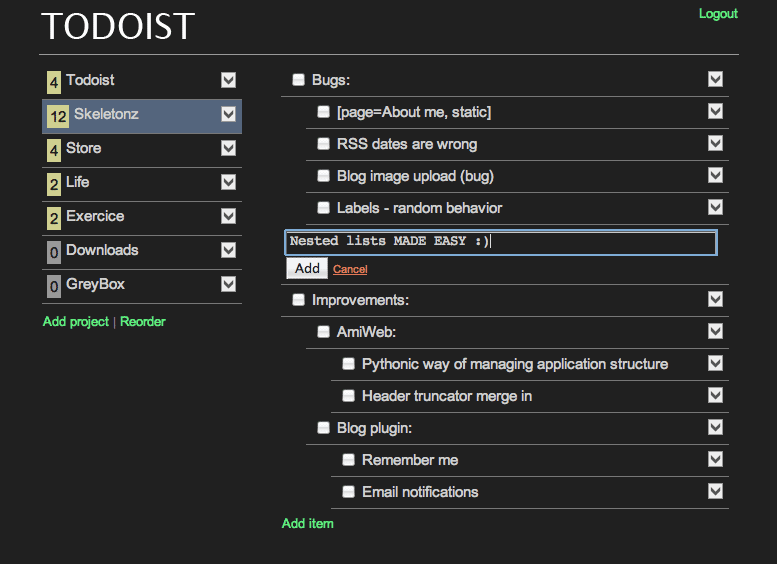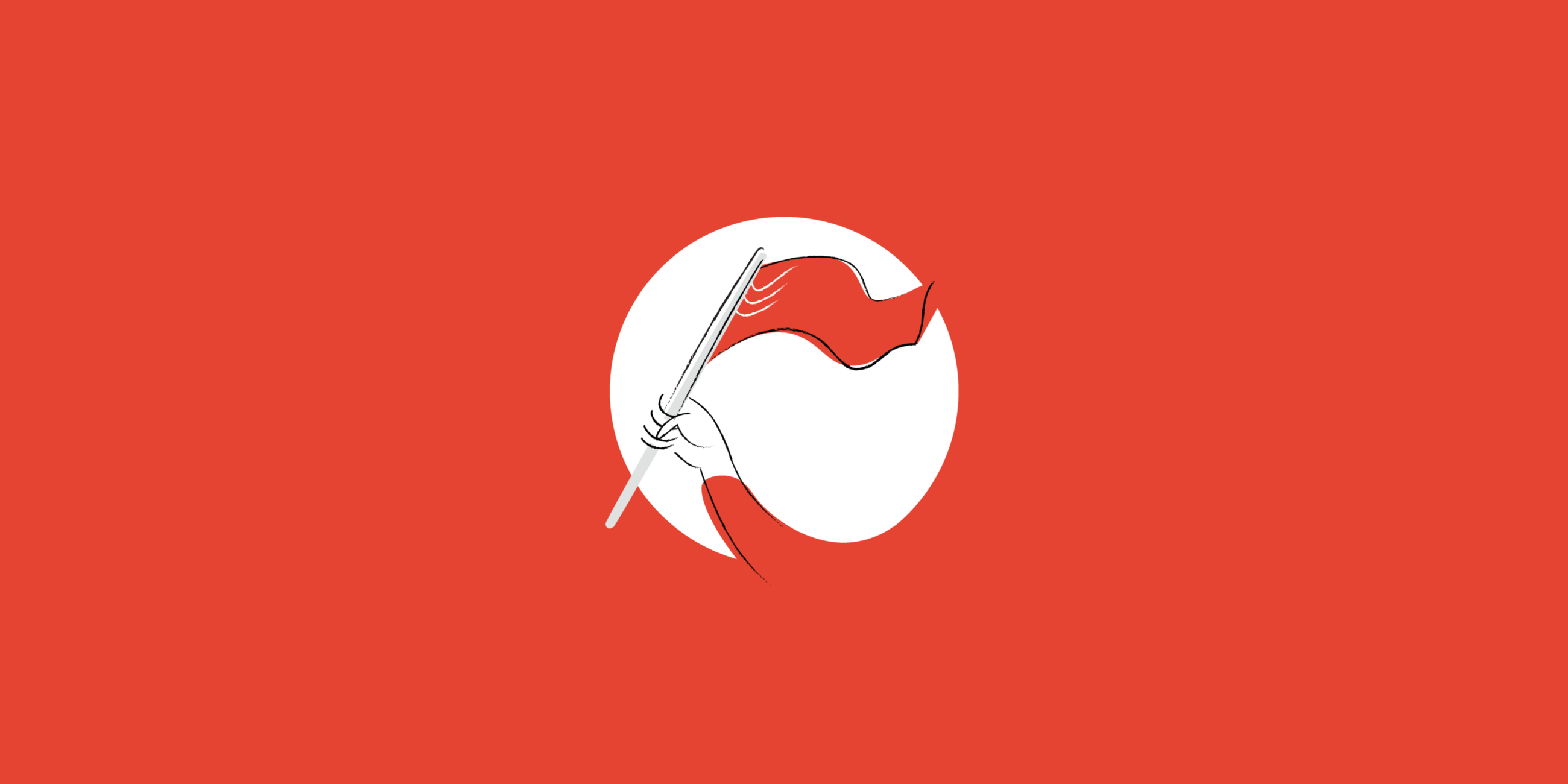This month marks my ten year anniversary of working on Todoist. In this time Todoist has grown from a personal project to a service that has helped people complete tens of millions of projects.
In this timeframe, we’ve competed in one of the most saturated markets, to-do list apps. We’ve battled multinational corporations like Apple, Google, and Microsoft. We’ve survived and outlasted start-ups that had millions of dollars in funding, some that were even sold for hundreds of millions of dollars. Ten years later, we can finally call ourselves one of the market leaders in our space.
And we did this as an entirely bootstrapped and remote-first company.
This article is not on how to make it big overnight (or even in a year). It doesn’t offer advice for wooing VCs. It’s not a roadmap to start-up fame and fortune. Instead, it’s my reflection on Todoist’s journey over the last ten years and the important decisions we made along the way — some we didn’t even realize the importance of at the time — that have helped us build not just a market-leading product but a sustainable company that our team can be proud of. If you’re thinking about starting your own project, I hope it will help you think about ways you can approach things differently.

Solve your own problem
When I started Todoist in January 2007, I had no perspective of what I was creating. It was a side project — a simple to-do list app I did for myself to manage my chaotic life. I never imagined it would evolve into a company or something that’s used by a lot of people.
If you are looking for your next idea, pick a problem that you are having and solve that. It’s a much simpler mindset since you don’t need to second guess what others want. It’s also easier to be passionate about solving a problem you already have.
This pattern seems to be quite common and is mentioned by Paul Graham in his How to Get Startup Ideas essay:
The way to get startup ideas is not to try to think of startup ideas. It’s to look for problems, preferably problems you have yourself.
The very best startup ideas tend to have three things in common: they’re something the founders themselves want, that they themselves can build, and that few others realize are worth doing. Microsoft, Apple, Yahoo, Google, and Facebook all began this way.
After a while, you will find other people that share your problem, and this will motivate you even more to continue your journey.
The problem you solve does not have to be unique. If you look around you’ll see that Google wasn’t the first search engine, and Facebook wasn’t the first social network. Try to find a problem that isn’t solved by others in an excellent way and that you think you can do better.
The problem Todoist solves is a very old one — even Leonardo Da Vinci had a to-do list.
It’s important to not be too hard on yourself at the beginning. Most products start as fragile implementations. It can be very hard to spot their real potential, even for their creators. Case in point: here’s one of the first screenshots of Todoist and one of the first screencasts I did (so embarrassed by my Arnold English 🤐).

Don’t get caught up with fantasies of making a product that will be used by millions. Be excellent at solving your own problem first.
It’s a marathon and not a sprint
Building a company (or learning anything at a top level) is a long, sometimes exhilarating, sometimes boring, often frustrating marathon. It’s not a sprint. And most likely you’ll suck at it in the beginning.
Our success with Todoist isn’t because we were faster or smarter or more talented than others. It’s because we worked hard, steadily, for over a decade.
One of my favorite pieces of advice for developers is Teach Yourself Programming in Ten Years by Peter Norvig, Google’s director of research. Peter’s article is much deeper than programming; we can apply it to mastery of anything, including building companies.
Researchers (…) have shown it takes about ten years to develop expertise in any of a wide variety of areas, including chess playing, music composition, telegraph operation, painting, piano playing, swimming, tennis, and research in neuropsychology and topology. The key is deliberative practice: not just doing it again and again, but challenging yourself with a task that is just beyond your current ability, trying it, analyzing your performance while and after doing it, and correcting any mistakes. Then repeat. And repeat again.
Are you starting a company or trying to learn something new? Prepare for a marathon and not a sprint. Look at what you can achieve in ten years and not merely a few months.
Once you’ve committed to the marathon, enjoy it for it’s own sake. Buddha captured this important idea succinctly in ~500 BCE:
“Happiness is a journey and not a destination”
It’s easy to think that reaching a goal — generating a million dollars in revenue, reaching a million users, getting featured in a big publication — will make you happy. In most cases it won’t. Building your company is a journey that you need to enjoy while you’re on it — for the health of your company, the well-being of your employees, and your own sanity. If you wake up each morning hating your job or your life, then stop and rethink what you are doing.
That’s why we’ve never had an exit strategy. We never focused on the exit, but on building a company for the long term and enjoying the journey along the way. That’s one of the key reasons I think we’ve been so successful as a team:
What’s better than an exit strategy? It’s a long-term mission that your company truly cares about. It’s focusing on building a company that can outlast you and creating something of true value.
Become a remote-first company
Doist has been a remote-first company since the beginning, before the books and articles on remote working. This decision wasn’t because we wanted to be trendy, but because it was the only way we could hire people we needed.
When I began hiring people I was living in Santiago, Chile and it was incredibly hard to find tech people there. I had two options: relocate to a tech hub or hire people remotely. At that point, I had just met my girlfriend (who is now my wife) and of course chose the remote option, because love is more important than the success of your start-up (right!? 😊). Over the years, we’ve remained a remote-first company, hiring almost 50 amazing team members from around the world.
Remote-first means that we don’t have a centralized office. We don’t care about people’s timezones, locations, or ethnicities. We hire people from all around the world, and we all collaborate together in the virtual space.
It’s a paradox that some of the most technologically advanced places (e.g. Silicon Valley, New York, Berlin or London) still require people to commute daily to offices and work face-to-face. This on-site requirement creates huge issues such as expensive rent, pollution and long commutes.
Remote first has many challenges, but it also has so many advantages for companies of all sizes but especially for ones that are just starting out. As a founder, it gives you the flexibility to:
- Hire people from anywhere, opening up a huge pool of amazing people!
- Experiment with modern work processes. At Doist we don’t have set work hours. Our people can choose the schedules that work best for them.
- Create a truly multicultural team. At Doist we have people from around 20 countries that bring a ton of diverse perspectives. It enables us to create products for a wider audience, not just a particular region or demographic.
From an employee perspective, there are also huge advantages that come with remote work, like the ability to stay near friends and family while having options to have meaningful job that pays well (i.e. you don’t need to relocate to a super expensive city just to get a great job).
Hire people better than you (and then trust them)
One of the things I am most proud of isn’t the products we’ve built, but the truly amazing people we have gathered from all around the world. Your company is your people. Period.
Recently we had a discussion about the type of individuals we want to hire, and we set one overarching guideline: Hire people who are better than you or that have a clear potential of becoming better than you.
Our hiring philosophy isn’t about searching for the top talent and outbidding all other companies with higher salaries. If you’re a relatively small company, you’ll lose every time. Instead, we look for people who believe in our mission, take pride in their craft, and have demonstrated talent but may not have the traditional credentials that many tech companies focus on.
Over the years, we’ve often chosen to invest in people who start out with nearly no experience, but clear potential and drive. We give them room to make mistakes, learn, grow and become world-class.
But hiring great people isn’t enough. After you’ve hired people, you must learn to trust them. Give them freedom and trust them to do the work. Trust them to care about the company’s mission and trust them to be good people. Deep trust is the reason why we can give people so much freedom and let people work whenever and wherever they want. If you’re asking yourself how to supervise your remote workforce, you’ve already lost the battle. It isn’t easy to trust others with your dream, but it is a necessary step to building amazing products and a sustainable company.
Freedom alone isn’t enough either. A necessary companion to freedom is responsibility. Responsibility means our people are being held accountable for their actions (both good and bad). Truly great people will appreciate and thrive when given real responsibility and held to high standards. Those are the kinds of people who will make your company great. (Sharing your journey with great people also makes it more fun — the highs become more satisfying and the inevitable lows are more easily endured.)
In the beginning, a focus on finding product-market fit is essential. But I would strongly recommend early on to also think deeply about the culture you want to build and how that will inform your hiring decisions. Those are the decisions that will determine the long-term sustainability of your vision.
I hope this article has given you a different (more long-term and sustainable) perspective on building your own market leader in whatever industry you choose.
If you’re interested in joining us on our journey, check out our job openings. We’d love to hear from people who share our passion for high-quality products and long-term, sustainable growth.
And please don’t hesitate to reach out to me with questions or comments below.

